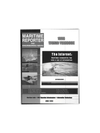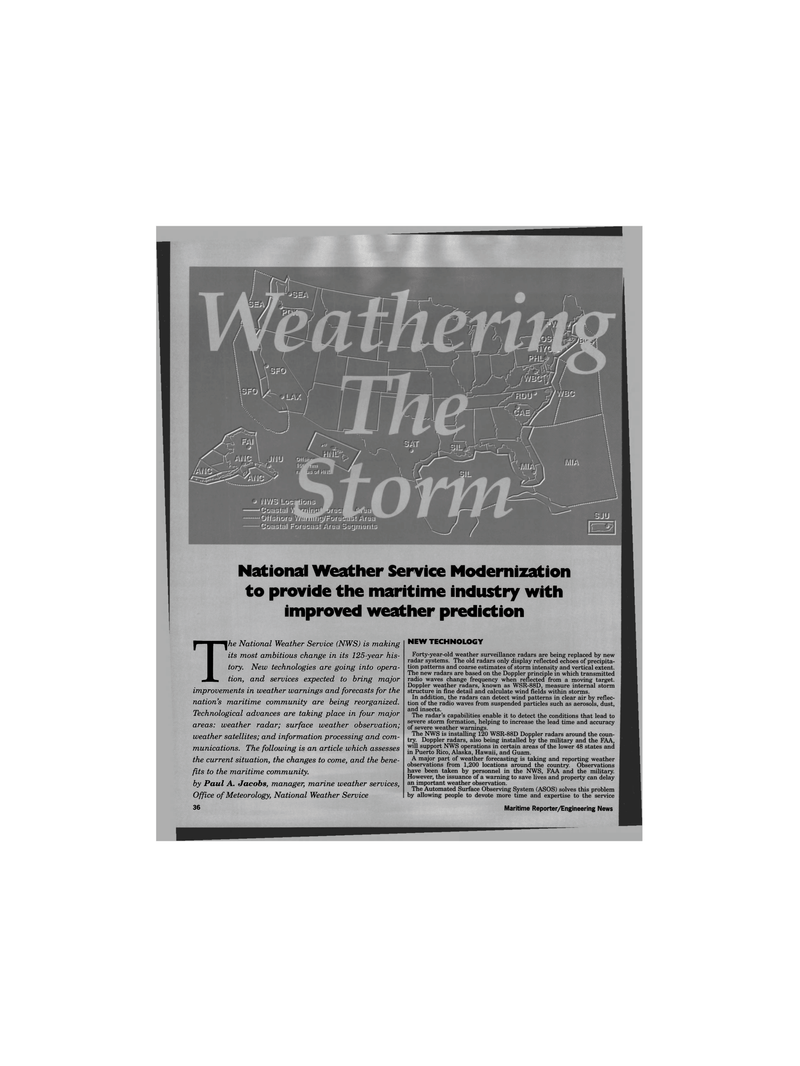
Page 34: of Maritime Reporter Magazine (June 1996)
Read this page in Pdf, Flash or Html5 edition of June 1996 Maritime Reporter Magazine
National Weather Service Modernization to provide the maritime industry with improved weather prediction
T he National Weather Service (NWS) is making its most ambitious change in its 125-year his-tory. New technologies are going into opera-tion, and services expected to bring major improvements in weather warnings and forecasts for the nation's maritime community are being reorganized.
Technological advances are taking place in four major areas: weather radar; surface weather observation; weather satellites; and information processing and com- munications. The following is an article which assesses the current situation, the changes to come, and the bene- fits to the maritime community. by Paul A. Jacobs, manager, marine weather services,
Office of Meteorology, National Weather Service 36
NEW TECHNOLOGY
Forty-year-old weather surveillance radars are being replaced by new radar systems. The old radars only display reflected echoes of precipita- tion patterns and coarse estimates of storm intensity and vertical extent.
The new radars are based on the Doppler principle in which transmitted radio waves change frequency when reflected from a moving target.
Doppler weather radars, known as WSR-88D, measure internal storm structure in fine detail and calculate wind fields within storms.
In addition, the radars can detect wind patterns in clear air by reflec- tion of the radio waves from suspended particles such as aerosols, dust, and insects.
The radar's capabilities enable it to detect the conditions that lead to severe storm formation, helping to increase the lead time and accuracy of severe weather warnings.
The NWS is installing 120 WSR-88D Doppler radars around the coun- try. Doppler radars, also being installed by the military and the FAA, will support NWS operations in certain areas of the lower 48 states and in Puerto Rico, Alaska, Hawaii, and Guam.
A major part of weather forecasting is taking and reporting weather observations from 1,200 locations around the country. Observations have been taken by personnel in the NWS, FAA and the military.
However, the issuance of a warning to save lives and property can delay an important weather observation.
The Automated Surface Observing System (ASOS) solves this problem by allowing people to devote more time and expertise to the service 36 Maritime Reporter/Engineering News

 33
33

 35
35
